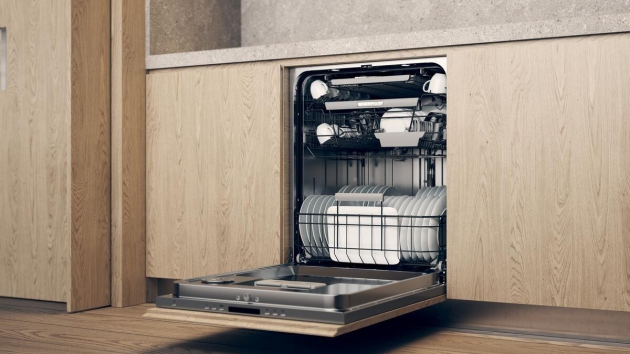The earliest type of dishwasher was developed approximately 160 years ago. This created a revolution that has led to the new, sleek dishwasher models we use today. So, if you’re interested in the history of the modern dishwasher, read on as we delve into the history of dishwashers and how this home appliance has changed our world.
The Invention of the Dishwasher:
The first patent for a dishwashing appliance was lodged in 1850 by inventor Joel Houghton. This initial design was made using wood, so water passed through the wood plumbing system and sprayed the dishes.
However, in 1887, Josephine Cochrane advanced this design and presented it in 1893 at the Chicago World’s Fair. Cochrane produced the first automated dishwasher with a copper boiler containing a wooden wheel. You could drive the motor by hand using a pulley, or it could be powered. The dishes were placed into framed wire compartments, where they were spun and sprayed with water and soap.
The Modern Day Dishwasher:
The dishwashers that we’re familiar with today do not look like these early designs. They more closely resemble an appliance invented in 1924. This type of dishwasher had a rack system and rotating sprayer like modern dishwashers use today. However, since in 1924, many homes lacked indoor plumbing, it was a device for the wealthy only. Unless you had a home with indoor plumbing and power, it would be pointless to install a dishwasher.
Smart Features:
Modern appliances have taken an even more dramatic development journey with smart technology. Smart dishwashers add greater efficiency and more flexibility with technology to address common issues such as particles of food getting redeposited on your dishes.
The smart features on new dishwashers include items such as:
- Bottle jets to help clean tricky items like reusable water bottles or baby bottles
- A third rack that is thin and can hold flat, large items such as cooking utensils or baking sheets.
- Adjustable racks that you can move up or down to accommodate larger items.
- High efficiency filters to remove food particles.
- WiFi connectivity to integrate your dishwasher into your smart home system, allowing you to start cycles, monitor performance, or check the cycle status on your smartphone.
- Smartphone alerts if there is a malfunction or if the detergent or rinse aid is low. Some models also allow you to automatically order more detergent as needed.
- Sensors to detect the size load automatically to adjust energy use and water for optimum efficiency.
- Ability to download new cycles for specialist items such as heavy soiling or delicate stemware.
How The Dishwasher Has Changed Our World:
Until the 1950s, a dishwasher was considered a luxury item, but as these appliances became more popular, they became a necessity in American homes in the 1970s. Today, 75% of Americans own a dishwasher.
Dishwashers today are also easier to use. They feature removable racks, better rotating sprayers, and pre soak cycles to provide better cleaning results without compromising on water and energy efficiency.
According to the US Department of Energy, dishwashers today save both water and energy, using less water to wash a load of dishes compared to washing by hand. Additionally, these appliances can reach far hotter water temperatures than you can expose your skin to for even more thorough cleaning.
The dishwasher has become a crucial part of our homes. They influence the way we design our kitchens. Many homeowners now consider the location of a dishwasher to be as important as the sink, stove, and refrigerator triangle used in kitchen design for decades.
If you’re considering a new dishwasher for your home, you can explore your options with this online collection. If you need further help or guidance, speak to one of our home appliance experts.

